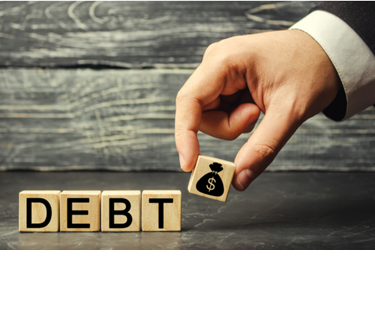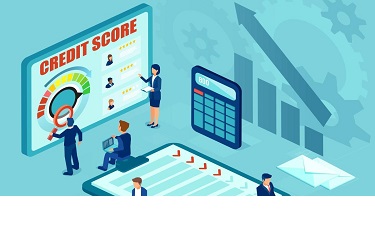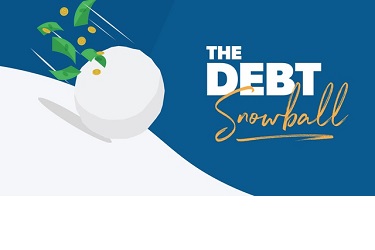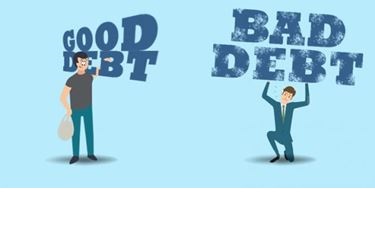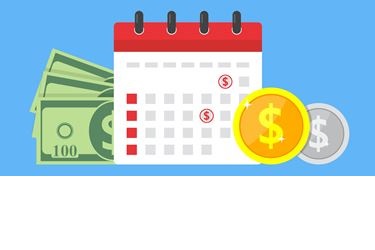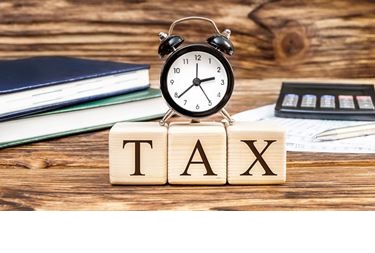Ways to Build Wealth at Any Age
Whether you want a worry-free retirement or a custom-built home, your financial goals are worthy investments. But they won’t come without careful planning.
When it comes to people’s top financial goals for 2021, Country Financial’s 2020 security index report found that controlling spending, saving for an emergency, paying down credit card debt or student loan debt, and saving for retirement were among top goals. Purchase-oriented goals—such as buying a car and purchasing a home—also made the list.
There are some tried and true ways to save money and build wealth at any age—whether you use those funds for immediate purchases, long-term goals such as retirement, or estate planning for after you’re gone.
The key is to start now, rather than wait until “the right time.” Here are some simple actions you can take today to get started building wealth and cash flow for tomorrow.
Set Short- and Long-Term Goals
The first step in building wealth is to set short and long-term goals you can revisit throughout your journey.
Short-term goals focus on achieving more immediate results, such as funding next summer’s trip or buying a new car. In contrast, long-term goals might require several years or more of preparation. For example, you may want to collect enough to pay off your mortgage or send your kid to college. Creating realistic goals at the start gives you direction, so make them as specific as possible.
Create a Budget
Once you know your goals, drafting a monthly budget becomes more manageable. Document up to three months’ worth of expenses and then break the list down into fixed costs, variable costs, necessary costs and discretionary costs. You can’t stop paying your utilities, but you will likely find places to save in your discretionary category (think restaurant meals, or entertainment expenses). Dedicate a portion of that discretionary spending to your goal’s fund regularly.
Taking stock of your financial situation gives you a clearer understanding of where you are, where you’re going to go, and how you’re going to get there.
Pay Off Deb
To dedicate more money toward building wealth and saving for your goals, you’ll likely need to pay off some debt first. You can use your discretionary income as a tool for minimizing your debt load. If you have multiple debts, consider using a debt repayment method, such as the avalanche method, the snowball method, reaching out to a debt settlement or debt consolidation company to accelerate the process.
Debt Repayment: The Avalanche Method
The avalanche method prioritizes high-interest debts by ranking the interest rates from greatest to least. Then, regularly pay the minimum on each of your debts, and put any leftover funds towards the one with the highest interest rate. Once you pay that off, continue on to the second-highest debt. Follow that pattern to minimize the interest you’re paying as you become debt-free.
Debt Repayment: Snowball Method
Alternatively, the snowball method is another debt repayment strategy. It’s essentially the opposite of the avalanche approach. List your debts from smallest principal to largest, ignoring the interest rates. Then, regularly dedicate enough funds to each to avoid penalties, and put any extra money toward the smallest debt.
After the smallest debt is paid, redirect your attention to the next largest debt, and so on. As the number of individual debts shrink, you’ll have more money to apply towards the larger debts. You may still have interests to worry about but picking off the debts one by one can impart a sense of forward movement and accomplishment.
Debt Settlement
With the Debt settlement method your credit will be affected because in order to settle debt the account need to be delinquent. This method is not right for everyone but if you are facing a mounting load of unmanageable amount of debt Debt Settlement may be the right option.
Debt Consolidation
Debt Consolidation is a method where a company will take all of your accounts under one umbrella, close them all, and pay them off with a reduced interest rate over a period of 5 years or so. This method is typically much more expensive than a debt settlement program.
Begin Investing
If you haven’t already, find out what if any employer-sponsored retirement savings plans are available to you, such as a 401(k). These qualified retirement plans offer tax advantages and typically allow you to direct a portion of your paycheck to your account, putting your savings on autopilot. If your workplace does not offer any retirement accounts, consider opening an IRA or a brokerage account to build an investment portfolio.
Generally, investing for retirement when you’re young means you can take on more risks. While a diversified portfolio is a standard strategy, younger investors might have a portfolio that’s heavier on equities early, since they may help you capitalize on long-term growth. As you get older and closer to retirement, your risk profile may change and your portfolio will need a rebalancing to incorporate more fixed-income investments.
How to Increase Your Income and Save More
You might be getting by on your current income, but if you had the chance to boost it, wouldn’t you? With an extra-positive cash flow, you could tackle debt, save more, and achieve your goals sooner. Here are a few ways to make that happen.
Ask for a Raise
Asking for a salary increase is one solution for improving your cash flow. All it takes is one good conversation, a positive work record—and a bit of courage and confidence. Speak to your peers and read up on how to conduct yourself when asking. Going in with a plan will save you anxiety and help you get your points across clearly.
Seek Other Investment Opportunities
When investment opportunities pop up, take advantage of the ones that speak to you whenever possible. Some may be easier to break into, like real estate, one of the world’s largest asset classes. Other reliable options include gold and silver, which you can invest in physically or through ETFs. For investors willing to take on a higher-risk opportunity, investing in startups may be appealing. It all comes down to what investment will best serve your personal short- and long-term goals.
Start a Side Gig
Additional work is also great to bulk up your resume and create new connections. It seems like everyone is starting up a side hustle these days. From online shops to freelancing, the opportunities are endless. All you have to do is determine your marketable skills and how to advertise them. There might be local opportunities, or you can create a profile online with related websites like Etsy or Hourly Nerd.
Cut Expenses
Sometimes it’s not about finding new currents of money, but about creating a larger pool with the money already coming in. Take a second pass at your list of discretionary expenses to pinpoint a few more areas you could cut back on without feeling the impact in your day-to-day life.
One good example: Automatically renewed subscriptions for streaming services and local businesses, like gyms, are convenient. But think about how frequently you use the service. If the answer is “not often,” you’re not getting your money’s worth—and you may want to negotiate a lower fee, or cut the subscription altogether.
How to Build Wealth at Every Stage of Life
While it’s good to have a general strategy in place for building wealth and increasing cash flow, different stages in your life may require you to focus on different things. Taking advantage of the opportunities each decade brings you will help you financially adjust and build a stable lifestyle.
In Your 20s
You may be right out of school and trying to navigate the job market, but don’t wait to start working towards your long-term financial goals. Future You will only be prepared if Current You starts planning now.
Create an Emergency Fund
Generally, an emergency fund should include about three to six months’ worth of living expenses. Although that sounds like a lot, you’ll be grateful for the cushion if you should lose your job, or crash your car, or have a medical emergency. Unexpected things happen all the time, and an emergency fund will protect you while you get things back up and running. It will also keep you from having to touch other savings accounts, like a retirement account.
Eliminate High-Interest Debt
Your student loans aren’t going anywhere, so pay them off as soon as possible. The same goes for any other high-interest debt you might have incurred, such as with a credit card. Paying off growing interest rates will bog down your ability to save.
However, don’t be afraid to use your credit cards. Your 20s are the perfect time to build credit, which will be vital to certain goals, like purchasing a house. Use them strategically and pay them off immediately to build an upstanding credit history.
In Your 30s
Your 30s may bring some stability into your life, whether it’s regular work, a partner, and/or kids. However, the costs you’re facing are likely growing with you. Focus on money moves that will benefit you long-term.
Plan for College Expenses
If you have children, saving for their education is a big step. Use opportunities like a 529 account to help provide the funding. A 529 plan is a tax-advantaged savings plan you can use to pay for future tuition and related costs. That said, many people who’ve been there, and done that, may advise against prioritizing your kids’ education over your retirement.
Pad the Nest Egg
By some popular estimates, by age 30 you should have at least one year’s worth of your annual salary saved for your retirement—and twice that by 35. Incrementally increasing the amount you put towards your savings will help boost that number as well.
In Your 40s and Beyond
By 40, conventional wisdom holds that you should be well on your way to a growing nest egg with three times your annual salary saved up. At this stage, you may also have other assets to your name, such as property. If you have kids, they might be nearing college age, and retirement might not seem quite as far away as it once did.
Protect Your Wealth
It’s always smart to protect your assets and yourself. Make sure you have insurance covering both your estate and yourself (through health and life insurance). Insurance can take a burden off of your family’s shoulders in case anything happens to you.
Capitalize on Make-Up Contributions
A make-up, or catch-up, contribution, is an additional payment that anyone over age 50 can make to their 401(k) or IRAs retirement savings account. If you’re in a financial position to contribute these extra funds, it can help bulk up those savings to help prepare for retirement.
For 2021, the maximum allowable catch-up contribution to 401(k) plans is $6,500. The IRA annual contribution limit for 2021 is $6,000, with those 50 and above allowed to contribute another $1,000 a year. Total, anyone over 50 can put $7,000 into their IRA annually.
Wait to Take Social Security
Did you know you could receive a higher Social Security benefit if you wait to claim your benefits? Those who hold off collecting Social Security until age 67 get 108% of their benefits, and those who wait until the age of 70 can receive 132% of their monthly benefit. On the other hand, if you begin taking benefits early, at age 62, you’ll receive 25% less in monthly benefits.
Shift Your Asset Allocation
Investors should periodically revisit their portfolio and reassess their investments and risk level. As you get closer to retirement, you may decide to allocate a larger part of your portfolio to safer choices like bonds and other fixed-income.
The Takeaway
Building wealth at any age starts with a frank look at your current income and expenditures, a detailed list of short-term and long-range goals—and a little follow-through based on where you are in life.
It’s never too late to start building your wealth. SoFi Invest® can help put you on the right path to begin saving for your future. With no SoFi management fees, you can focus on building the portfolio fit to your investment style. Whether you prefer being an active investor or would rather automate the process, there’s an option for you.



